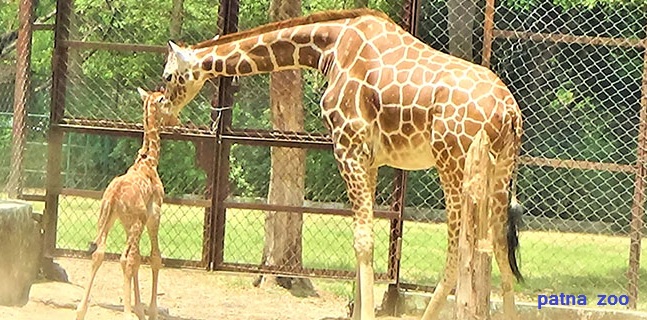Thinking Point
Sanjay Kumar
The writer is IIS, Deputy Director, Central Bureau of Communication /Press Information Bureau (PIB), Ministry of Information & Broadcasting, Govt. Of India
Reports of frequent animal deaths in Sanjay Gandhi Biological Park, Patna, (under the Environment, Forest, and Climate Change Department of the Bihar Government) are a cause of concern. On April 22, 2025, a male sloth bear named Changu died, while on April 13, a newborn calf of a female giraffe named Hima passed away. This raises the question: Are animals and birds safe in Patna Zoo?
Over the past six months, 10 significant animals have died, including two fishing cats, two rhinos, two Manipur deer, two male gaurs, one newborn giraffe, and one bear. Several birds have also succumbed. Additionally, the condition of the lone male lion remains critical.
The Patna Zoo houses 336 birds, 309 mammals, and 450 reptiles, totalling 1,095 animals and birds. The zoo administration has been unable to provide concrete reasons for these deaths. The death of the male sloth bear Changu on the morning of April 22 has left animal lovers in shock and a wave of grief has swept through the zoo. Rescued six years ago from the Nepal border area, Changu was brought to Patna Zoo. According to media reports, his body was being sent to the Indian Veterinary Research Institute (IVRI) in Bareilly to determine the cause of death. It was also reported that his health had been deteriorating for weeks and for the past three days before his death, he had stopped eating, drinking, and moving around in his enclosure.
After his death, only eight bears are left in the zoo. The sloth bear, listed in the IUCN Red List, is a species native to the Indian subcontinent. Scientifically named melursus ursinus, this omnivorous animal is known for its long, shaggy fur and sickle-shaped claws. It is primarily found in India, Nepal and Sri Lanka.
The sudden death of a giraffe calf has also left animal lovers stunned and zoo officials and staff are reluctant to speak about it openly. After media reports, the zoo administration claimed the calf died due to premature birth. The Environment, Forest, and Climate Change Department has remained silent on the issue of animal deaths in Patna Zoo.
The Patna Zoo is a major attraction for its giraffe population, currently numbering six. All animals are monitored by CCTV cameras. The zoo is also on track to set records in giraffe breeding and is recognized as a giraffe breeding centre. The birth of giraffe calves is a regular occurrence here. The zoo’s giraffes are of African origin, brought from the San Diego Zoo in the USA in 2006.
A male giraffe was later brought from Mysuru Zoo to support breeding. Patna Zoo now rivals Mysuru Zoo in terms of giraffe population.
On July 12, 2006, three giraffe calves—two females, Srishti and Shanti, and one male, Vikas—were gifted by the San Diego Zoo. Srishti and Vikas died in Patna Zoo, leaving Shanti as the sole survivor. Breeding was halted after the male giraffe’s death until a male giraffe named Bhima was brought from Mysuru Zoo, restarting the breeding programme. Since then, the giraffe population has been steadily increasing. However, the death of a giraffe calf is a serious concern.
In 2023, three gaurs were brought from Mysuru Zoo and their population began to grow. However, with the recent death of a male gaur, only two female gaurs and a calf are left. Media reports have raised questions about the management, highlighting a shortage of veterinarians. Many zookeepers have retired and operations are being managed on an ad-hoc basis with daily wagers or retired staff. The zoo had requested for an experienced veterinarian from the Animal Husbandry Department for the endangered male gaur. The department faced criticism, with reports of transfers of experienced zoo veterinarians. The forest department lacks a dedicated cadre of veterinarians.
According to officials, the zoo relies on available veterinarians to provide medical care. Although two veterinarians’ posts are sanctioned for the Sanjay Gandhi Biological Park, only one is currently filled. There are no compounders and the technician’s post is vacant. With such a large number of animals, this staff shortage is alarming. The Patna Zoo remains a popular attraction, but if animals are dying due to a lack of veterinarians, it is a matter of serious concern.
The Central Zoo Authority (CZA), a statutory body under the Government of India, regulates the management and operation of zoos. Its primary objective is to ensure animal welfare, establish minimum standards for their care, and contribute to wildlife conservation. The continuous animal deaths in Patna Zoo have put it under scrutiny, necessitating intervention by the CZA to take action and prevent future deaths, ensuring the protection of animals and birds.

















Leave a comment